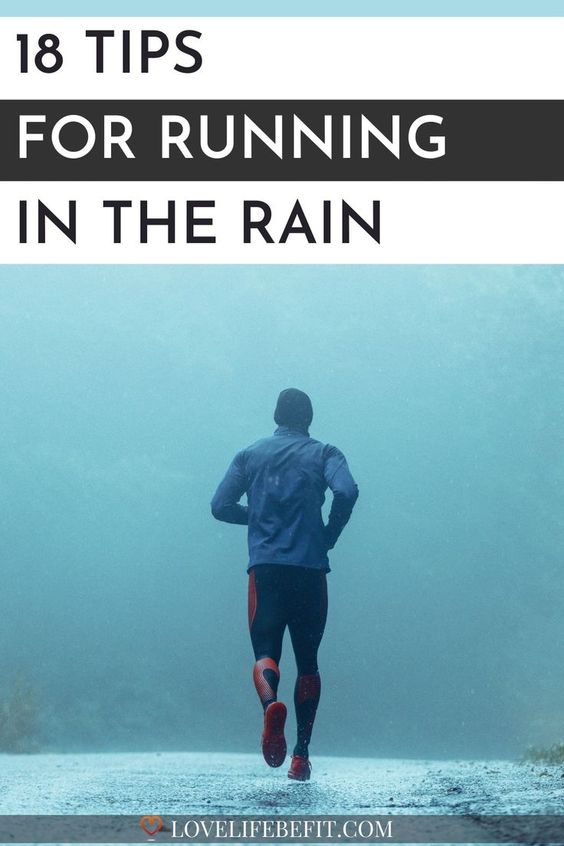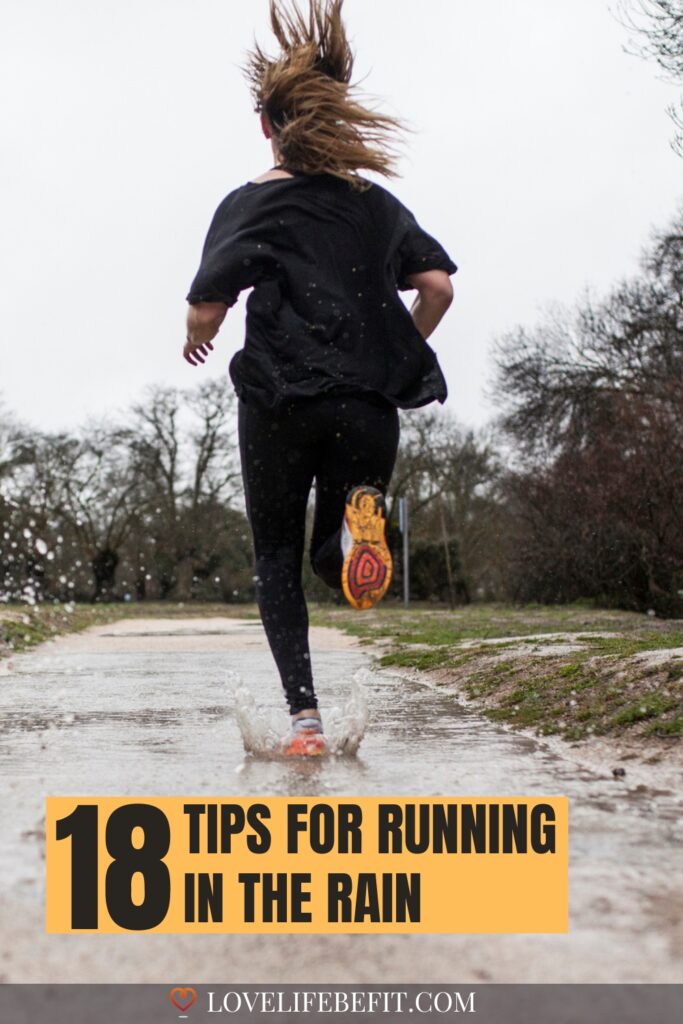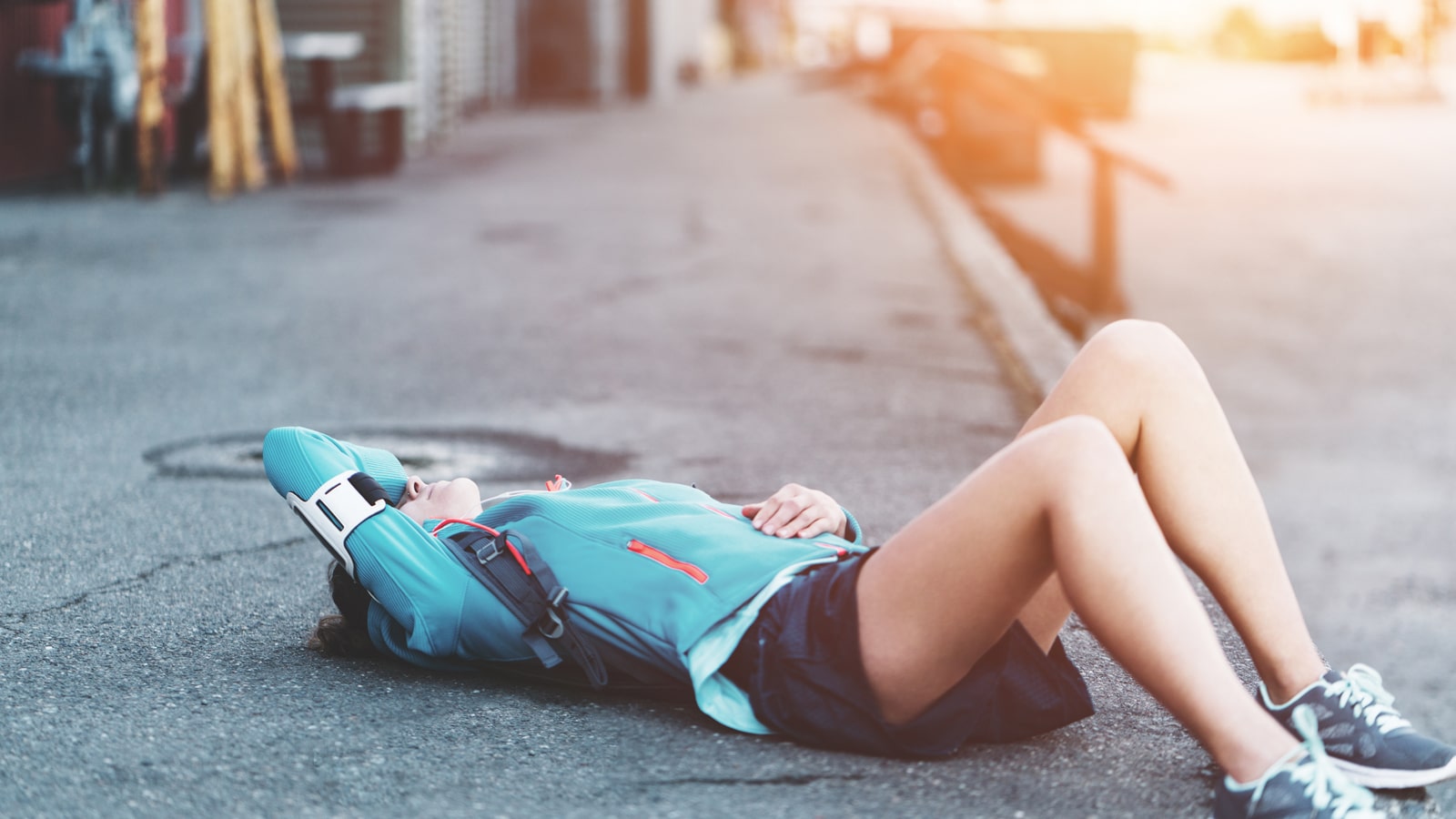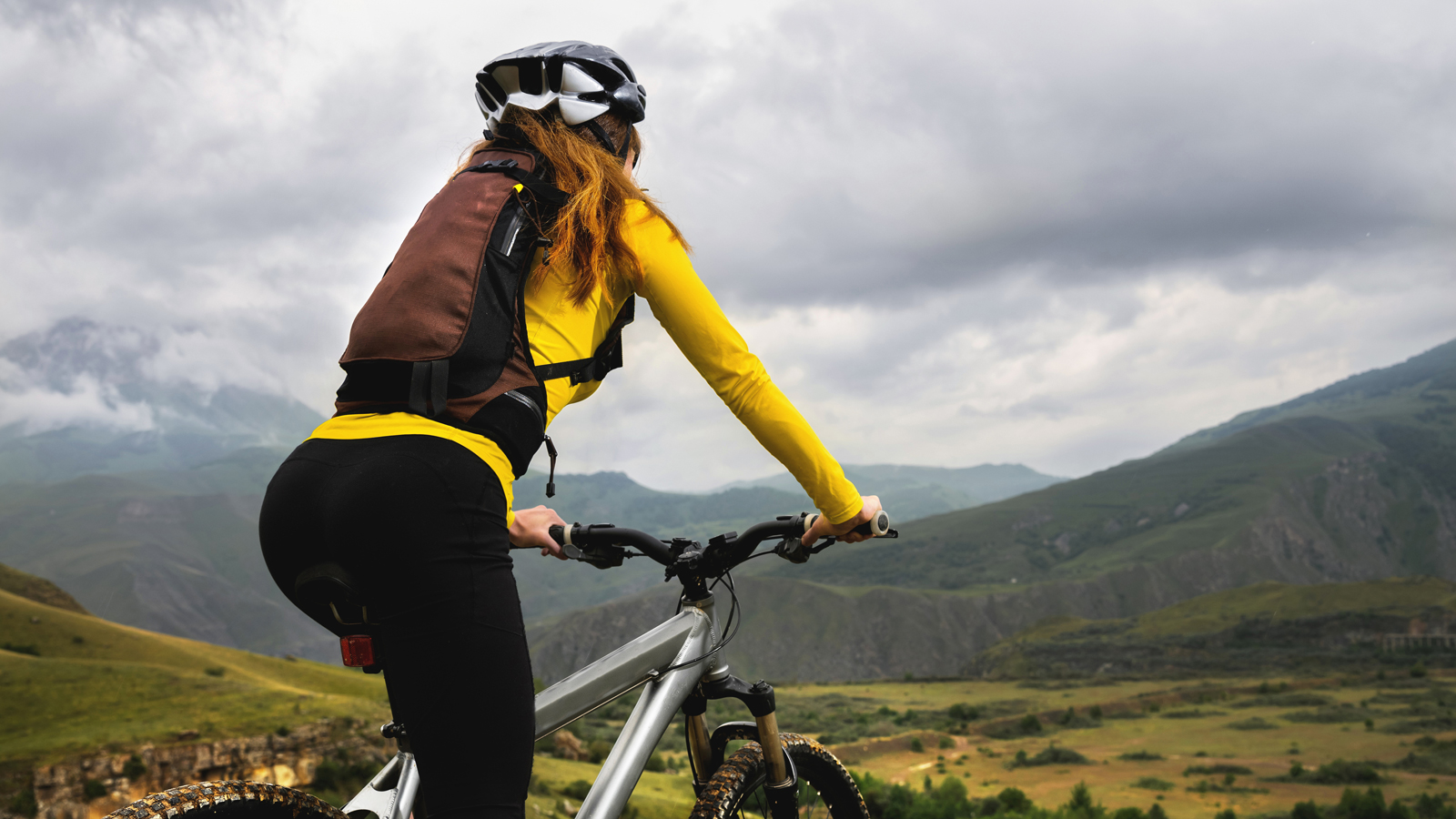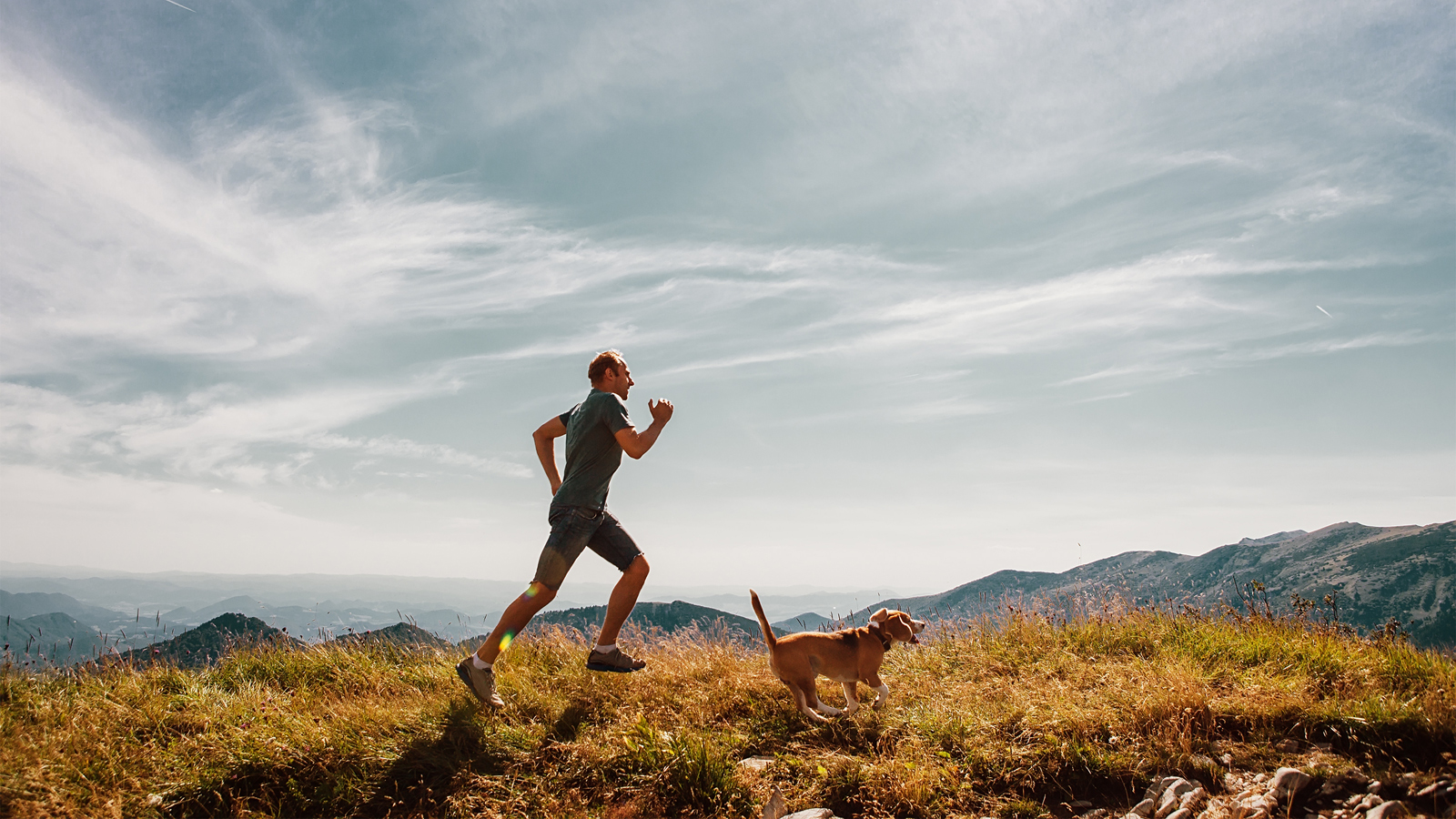18 Tips For Running In The Rain
Started running in the summer months? Running on rainy days can come as a bit of a shock. Where I live right now it rains A LOT. Does that mean I don’t get to run outside much? Of course not. You just need to apply a bit of common sense when you’re running in the rain, choose your running outfit wisely and take a few safety precautions for those rainy runs.
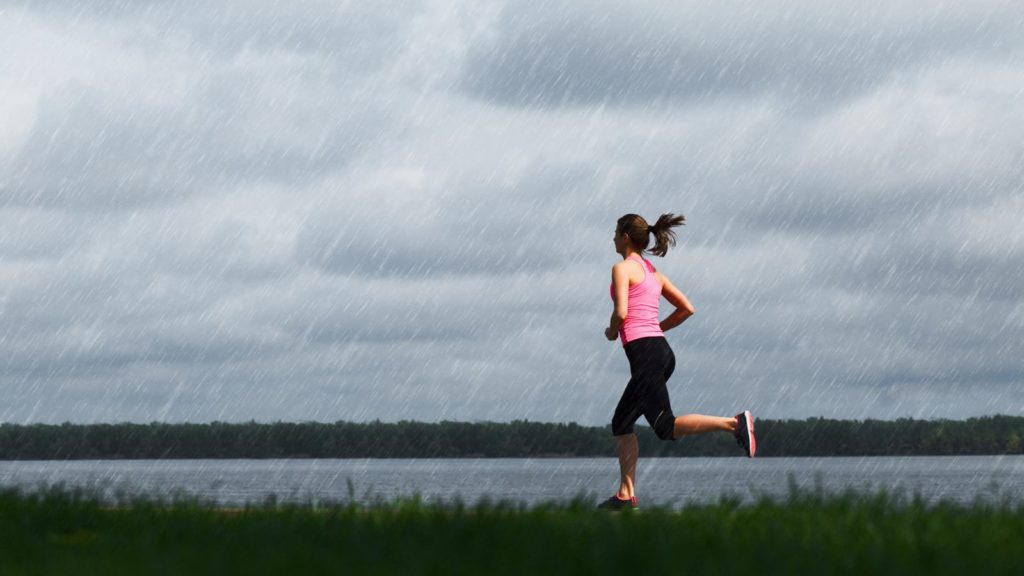
How To Run In The Rain
Run in shoes with good traction and plan your route carefully to avoid burst river banks and mudslides. Stay warm with a fully waterproof jacket for long runs in cold rain. Make sure you can be seen easily by traffic when you’re running in the rain, keep your phone dry, wear a cap to keep water out of your eyes, and change into dry clothes straightaway after your run.
Is It Safe To Run In The Rain?
Most of the time it’s safe running in the rain if you take some precautions – the exceptions are thunderstorms, strong winds, and really poor visibility. Dress for the conditions when it’s raining heavily and make sure you wear shoes with a good grip. You need to be especially careful if you’re trail running.
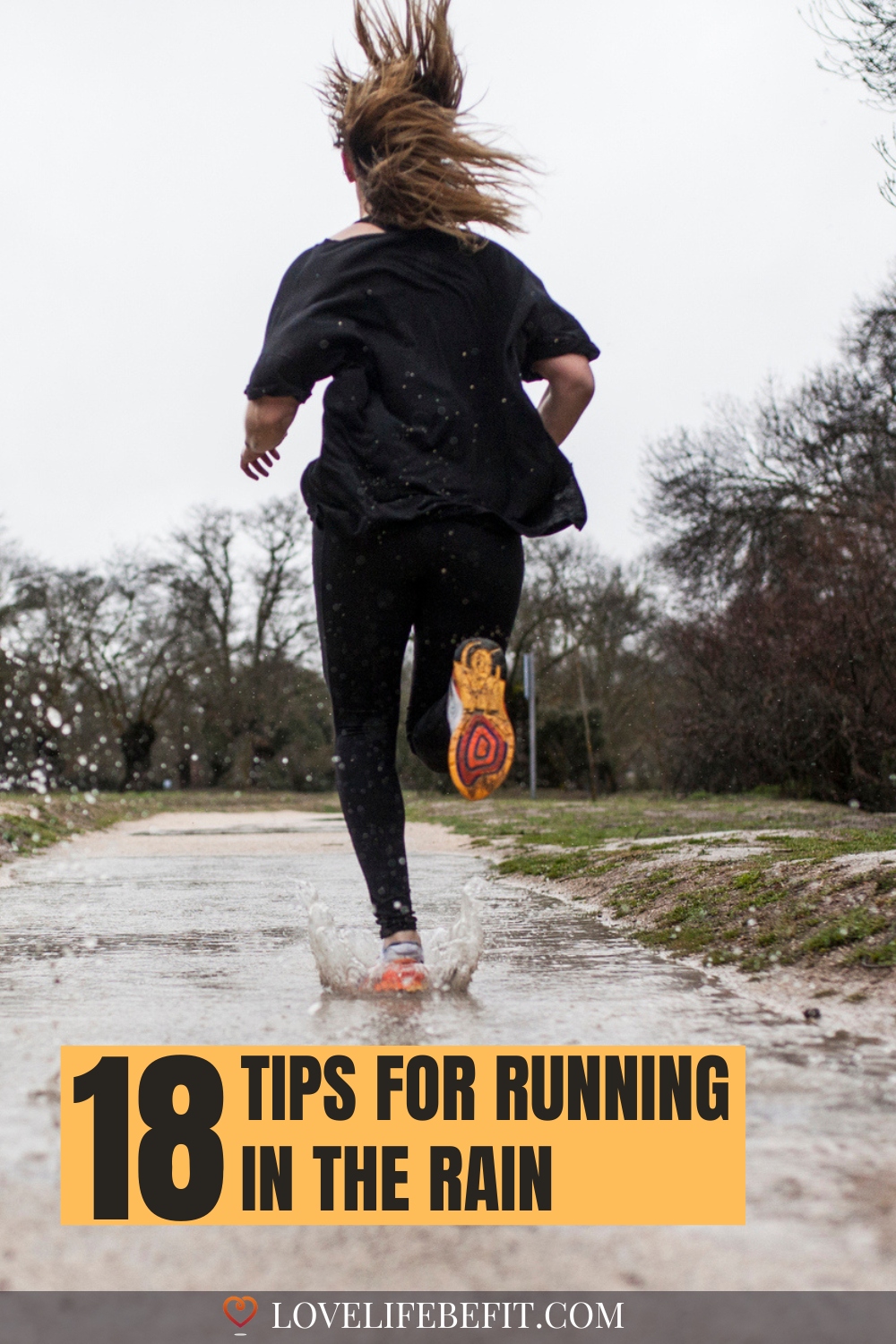
Tips For Running In Rainy Weather
#1 Hold Back A Little
Setting off for a long run in gale-force winds and energy-sapping horizontal rain? It’s a good idea to hold back a little on a rainy run. Go a little slower than your normal pace and keep some extra energy to get around the course.
#2 Go For A PB
Not all rainy runs are bad news – rainy day runs in light rain or a steady drizzle can be just what you need to improve your running times. Just being a few degrees cooler can make all the difference when you’re chasing a PB.
#3 Enjoy the Challenge
The best runners can adapt to all running conditions and will find the motivation to run even on wet days. Training in bad weather is good for mental toughness and makes you able to face whatever race day brings. Those races won’t be canceled for a little rainy weather and as soon as your rainy run is over you can head for a warm shower.
#4 Don’t Go Out In A Thunderstorm
I’ve climbed peaks with lightning flashing all around me. Trust me on this one – it’s a very scary experience.
Always check the weather forecast before your run. If you’re caught out in a storm, get off the top of hills or mountains as quickly as you can. Avoid sheltering under cliffs or in gullies and never shelter under an isolated tree.
#5 Avoid Strong Winds
It’s better to use a treadmill or reschedule your run on days with strong winds, especially if you’re trail running. The wind chill factor cools you down quickly exposing you to the risks of hypothermia. If you must go out, wrap up warm and take lots of spare layers with you.
Always avoid exposed mountain ridges in strong winds. An easy ridge on a calm day becomes a dangerous place to be when the wind picks up.
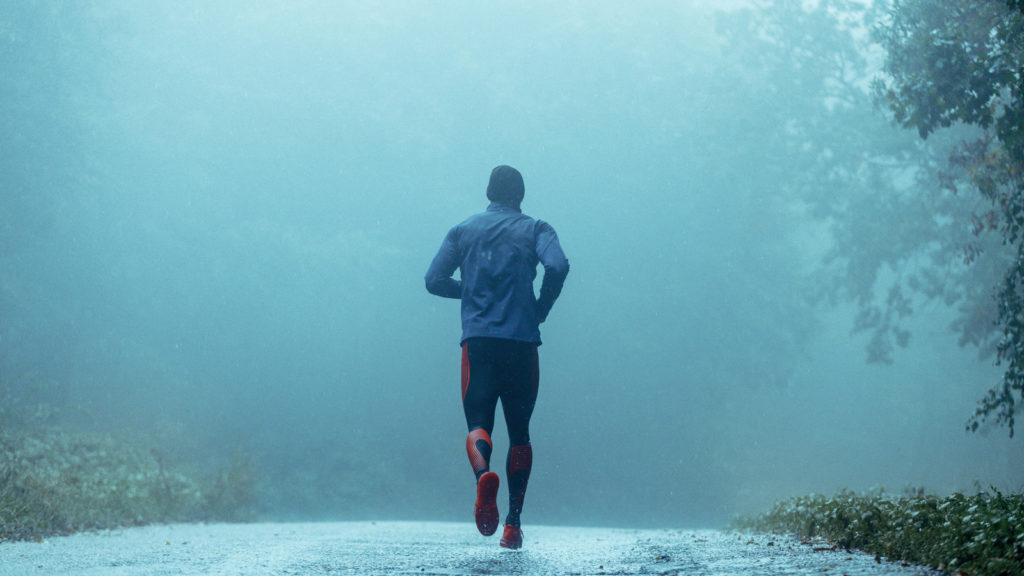
Running In The Rain Outfit On The Roads
When you’re running in the rain on roads the main safety issue is being seen by drivers. Vehicles with windscreen wipers going full pelt will be struggling to see the road ahead, never mind a runner in their peripheral vision.
#6 Be Seen
On a wet run, wear bright colors to make sure you stand out. Running in the rain is a time to break out those neon running tights.
On dark overcast days don’t wait until nightfall to reach for the hi-viz.
#7 Wear The Right Gear
Often the hardest part of running on rainy days is choosing the right gear. Your jacket may be the most important layer but sometimes it’s okay to just get wet. Find the Best Rain Jacket for running.
If it’s a warm but wet day, wearing a water-resistant jacket is sufficient for your outer layer. You won’t be dry at the end of your run but it will keep out the worst of the weather trapping warm air around your core.
#8 Wear A Couple Of Layers
Beef up your normal running kit for running in the rain. Layer moisture-wicking long sleeve tops and wear leggings for running in cold rain. If in doubt about what to wear, it’s always better to play it safe – go for more layers rather than less.
#9 Go For Good Traction
Running in the rain is not the time to test out your racing flats. You need some good traction on slippery wet roads. Wear running shoes with grooves that can channel water and cope with mud on the roads.
#10 Spare Pair Of Shoes
Starting a run in wet shoes is always unpleasant! Alternate shoes in spells of bad weather so you always have a dry pair.
Does rain ruin running shoes?
Constantly washing and drying out your favorite shoes will shorten their life and you’ll never get your shoes completely clean after a muddy run. It can be best to save your old running shoes for running in the rain.
The best option to get your shoes dry quickly is to stuff the toe box area with newspaper. Be warned! Drying out your shoes directly in front of a heater can cause damage. Don’t put them too close.
#11 Keep The Rain Out Of Your Eyes
I prefer to wear a baseball cap. Even if I’m wearing a jacket with a hood, wearing a running hat under the hood provides a better brim for keeping the rain off.
#12 Protect Your Phone
I think this is something you only do once – let your cell phone get wet in heavy downpours! I keep mine in a waterproof case or plastic bag and stash it in my flip belt.
You’ll find other tips for protecting your phone in my post “Where to put your phone when running“.
It’s also best to avoid wearing headphones when the weather is bad – you’ll need your wits about you to stay safe.
#13 Avoid Cotton Socks
If you’re still running in cotton socks it’s time for an upgrade. Cotton socks absorb water and chafe causing painful blisters. Look for specific running socks in technical fabric.
#14 Plan Your Rainy Day Route
Watch out for roads that flood or routes where visibility will be a problem. There’s a lot to be said for sticking to sidewalks or parks when running on wet days.
Take care splashing through puddles – yes it can be fun but just make sure you stay upright! Wet leaves can be surprisingly slippery!
#15 Dry Off Quickly
Sitting around in wet clothing after a run is asking for trouble. It’s a good way to end up with a cold. Change out of damp clothes as soon as you get inside and grab a hot drink and something to eat. Taking a hot shower on an empty stomach can make you feel dizzy!
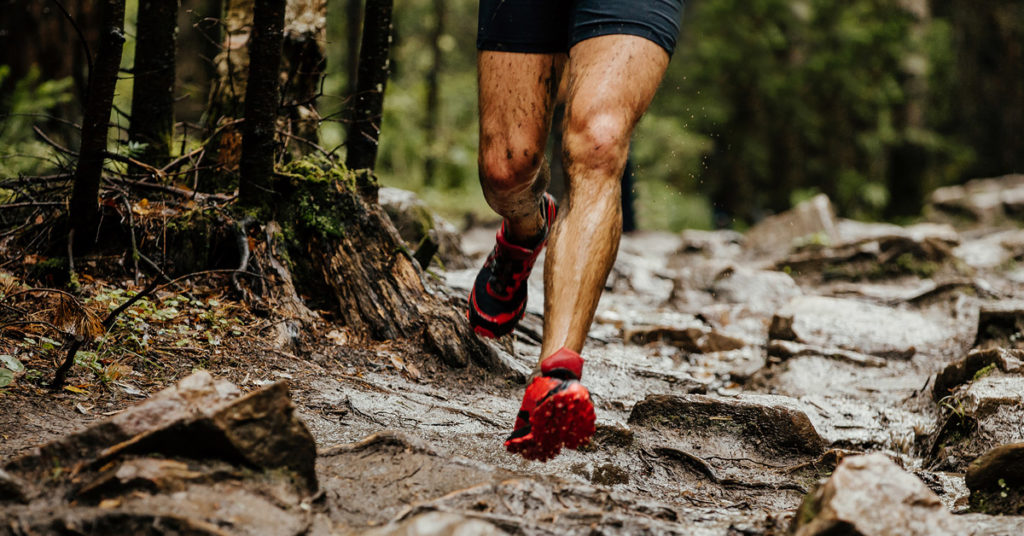
Extra Tips Running Outside For Trail Runs In The Rain
In wet weather running on trails and in the hills you’re always living on the edge. A slip or twisted ankle on a dry day in the hills is one thing. You can limp back to safety with no real harm done.
In adverse conditions and heavy rain, there’s a very real risk of hypothermia where your body temperature drops to dangerously low levels.
#16 Always TAKE Full Waterproofs
Water-resistant won’t cut it on the trails. Make sure you have a fully waterproof jacket and over trousers.
You need to put them on in good time. Don’t wait until you’re shivering with cold it wet clothes – it could be too late.
#17 Carry Safety Kit
Be prepared – it’s a motto that really works for the trails. In bad weather pack full waterproofs (jacket and trousers), a hat to keep your head warm, gloves, a spare warm layer, map and compass, high-calorie food, some water, and a headtorch.
#18 Don’t Forget Your Feet
Traction is incredibly important on wet trail runs. Replace those old shoes for supportive trail running shoes that fit properly with a good grip for slippery surfaces.
Having wet feet can be miserable but waterproof shoes can still fill up with water. Instead, put up with wet running shoes but wear waterproof socks. It’s the best way to keep your feet warm when running in the snow.
Thoughts From Love Life Be Fit
These tips aim to keep you safe when you run in the rain. There’s no harm in being cautious and finding a treadmill when the weather gets bad.
Running in the rain can be very enjoyable – just make sure you wear the right clothing and mitigate extra hazards. If you’re struggling to find the motivation to get out the door, take a look at these tips…
